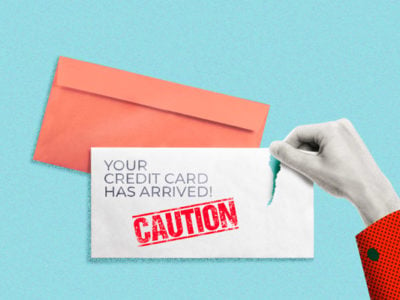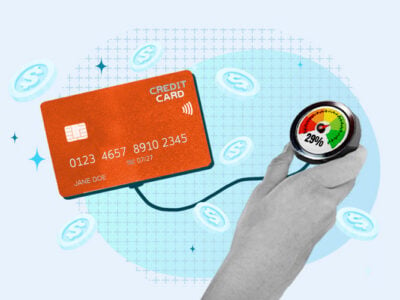If you have a repossession, it makes sense that you’re looking for ways to remove a repo from your credit report. Repos damage your credit score, stay on your credit report for seven years, and make it much harder to get new credit cards and loans.
The good news is that if you have an invalid repossession on your credit report—one that you believe was reported in error—you might be able to get rid of it by sending a repossession dispute letter.
Table of Contents
Downloadable repossession dispute letter template
A repossession dispute letter is very similar to a typical credit dispute letter. In essence, it’s a note that you believe the repo is a mistake and shouldn’t be on your credit report. In it, you’ll say that you’re requesting an investigation into the matter and that if you’re right, the item must immediately be removed from your credit report.
You can either send a repo dispute letter to the credit bureau whose credit report shows the repossession (e.g., Equifax, Experian, or TransUnion) or to the original lender that reported it to the bureaus. You can find templates for both scenarios below.

Repossession Dispute Letter to Credit Bureau
Use this template to dispute an invalid repossession with one of the three main credit bureaus that produce your credit reports (Experian, Equifax, or TransUnion).

Repossession Dispute Letter to Lender
You can also use this template to file a direct dispute with your original creditor or lender if you believe the mistake originated with them.
Which template should I use?
The template you should use depends on who you believe was responsible for the mistaken repo on your credit report.
You can send a letter to:
- The credit bureaus: If you don’t recognize the credit account associated with the repossession at all, it might be because the credit bureaus made a mistake (e.g., by confusing you with another consumer with a similar name). To contact them, you should use the first template.
- Your original lender: If you recognize the credit account (for instance, it’s an auto loan that you know you took out) but you believe that it didn’t actually end in a repossession, it’s more likely to be a reporting mistake on your lender’s part. Use the second template to file a dispute with them.
If you’re not sure which template to use, you can download and send out both of them. Mailing two sets of letters obviously takes longer, but other than that, there’s no downside.
How to write a repossession dispute letter
Your repossession dispute letter doesn’t need to be particularly long— be polite but firm and stick to the facts. You can use the letter below as your model, replacing the bracketed placeholders with your own information.
Re: Disputing a repossession on my credit report
Dear [Equifax, Experian, or TransUnion],
I am writing to request the investigation and correction of a repossession that appears on my credit report. The credit report number is [report number]. The repossession is listed under account number [account number], and the account was opened on [opening date] with [name of company or lender/creditor].
This repossession is [inaccurate/incomplete/obsolete] because [describe which information is inaccurate or incomplete, or state that the repossession is more than seven years old]. I am requesting that the item [be removed or otherwise changed] to correct the information.
I have enclosed copies of my credit report with the disputed information highlighted. I have also attached [any other supporting documents, such as payment records and court documents] to support my dispute.
Please reinvestigate this repossession, and [delete/correct] it as soon as possible. Thank you for your attention to this matter.
Sincerely,
[Your Name]
Along with your letter, consider attaching the following documentation (whatever you have on hand—when in doubt, more is always better):
- Billing statements to show that you made timely payments on the loan associated with the repossession
- The payment history for the loan associated with the repossession
- Correspondence with your lender confirming that an account has been corrected
- Copies of current bank statements with relevant account information
- Proof (e.g., a police report) that the repossession was the result of identity theft
- Copies of other documents as required by the credit bureaus (e.g., a government-issued identification card, such as a driver’s license or state ID card; utility bills; bank or insurance statements; etc.)
How to send your repossession dispute letter
Once you download the letter and add your own information, send it via certified mail to the credit bureaus or to your lender. Pay for a return receipt so you can tell when they received it.
You can find the credit bureaus’ mailing addresses in the table below. If you want to send a letter to your original lender, you’ll have to check your credit report or their website.
Where to file your dispute with the credit bureaus
| Experian | Equifax | TransUnion | |
|---|---|---|---|
| Where to send your dispute letter | Experian P.O. Box 4500 Allen, TX 75013 | Equifax P.O. Box 740256 Atlanta, GA 30374-0256 | TransUnion Consumer Solutions P.O. Box 2000 Chester, PA 19016-2000 |
| Dispute online | Experian's online dispute form | Equifax’s online dispute form | TransUnion’s online dispute form |
Alternative ways to dispute a repossession on your credit report
In addition to writing a letter, there are other ways to dispute a repossession with the credit bureaus.
You can:
- Send a dispute form: The credit bureaus all offer free dispute forms that you can use to file a dispute via mail. These work essentially the same way as the dispute letters we offer above—the difference is that they’re less customizable to your situation, but they’re a bit easier to fill out. To get started, visit their websites to download an Experian dispute form, an Equifax dispute form, or a TransUnion dispute form.
- Online: You can file disputes with the bureaus by visiting the websites linked in the table above. Some creditors also allow you to file disputes online, although not all. Check your lender’s website for details.
- Over the phone: You can also file disputes with the credit bureaus over the phone. Call the number on your credit report to get started.
In general, filing disputes online or via the phone is faster and more convenient. However, the paper trail that sending a real letter leaves is useful if your dispute isn’t immediately successful and you need to follow up.
Will a repossession dispute letter work?
Yes, repossession dispute letters work, but only if the repossession on your credit report actually is a mistake.
For that condition to be met, one of the following has to be true:
- Some or all of the information about the repossession is incorrect.
- The repossession is more than seven years old. (Most negative information, including all repossessions, must be taken off your credit report after seven years.)
If the repossession is correctly reported and less than seven years old, disputing it probably won’t work.
When will I find out whether my repo dispute letter worked?
Both credit bureaus and lenders are bound by a law called the Fair Credit Reporting Act (FCRA). The FCRA governs credit reporting practices and obligates them to respond in a timely manner to credit disputes.
Per the terms of the FCRA, if you file a dispute with the credit bureaus, they have to investigate it within 30-45 days. Once they complete their investigation, they have to inform you of their decision within five business days. Similarly, the FCRA requires data furnishers (such as creditors and debt collectors) to investigate disputes and respond to you within 30 days. 1
The upshot is that you might hear back within 30 days, and definitely should get a reply within 50 days. If you haven’t heard back after that point, send a follow-up letter.
What if my repossession dispute letter doesn’t work?
If your repossession dispute letter doesn’t work, the repo will stay on your credit report and will keep affecting your credit score. However, the effect will gradually lessen over time, and, after seven years, the repo will automatically be removed from your report. (If it isn’t, you can dispute it again.) 2
However, even if your first dispute is rejected, there are still a few options left to you before you simply give up and wait:
- Resubmit your dispute: If you send a second dispute, you should provide additional information proving that the repo is invalid. Otherwise, you’re likely to get the same result, and the credit bureau (or your creditor) might dismiss the dispute as “frivolous.” 1
- Get help from a nonprofit credit counselor: If you’re stuck, a professional credit counselor may be able to help you understand why your dispute was rejected and what you can do next. Most legitimate credit counselors will help you at relatively little cost and many offer free consultations. Be wary of companies that require you to pay a large fee upfront.
- Send a goodwill letter: This is a letter asking your creditor to remove (valid) negative marks associated with debts that you’ve already paid. If you agreed to a voluntary repossession and have also paid off any deficiency (remaining debt) that was left afterward, your relationship with your creditor might be good enough for this to work. You can create your letter with our free goodwill letter template.
- Send a pay-for-delete letter: This is a letter that uses an outstanding balance as leverage to negotiate the removal of a negative mark from your credit report. You can ask about pay for delete if there’s still a deficiency associated with the repossession. We also offer a downloadable pay-for-delete letter template which you can use to open the negotiations.
- Add a statement of dispute to your credit report: If you can’t get the repossession taken off your credit report, you can add a “statement of dispute” to your report. This is a note next to a disputed item that briefly explains to anyone checking your report why you believe the information to be wrong. 3 In most cases, this isn’t particularly helpful—there’s no guarantee creditors will even notice it when they run a credit check on you—but it’s better than nothing.
- Hire a credit repair company: Credit repair companies can send dispute letters for you and negotiate with companies on your behalf. They’re an option if you feel overwhelmed and want help, but they can be costly and don’t do anything that you can’t do for yourself. Credit repair scams are also common, so take care to look for a reputable company.
Be cautious when looking for credible credit repair services
Credit repair companies can’t work miracles. If a company promises that it can remove a recent and accurately reported repossession from your credit report, it’s probably a scam. Credit repair companies also can’t charge you for services up front—if they ask, they’re violating the law. 4
What to do in the worst-case scenario: complaints or lawsuits
If you’re certain your dispute is valid and your creditor or the credit bureaus are refusing to work with you, you have several last-resort options:
Filing a formal complaint
You can send a complaint (along with supporting documentation) to your state Attorney General’s office. They might investigate your case, and can also tell you about any protections for consumers that are specific to your state.
You can also file a complaint with the Consumer Financial Protection Bureau (CFPB), which you can contact online or by calling (855) 411-2372.
In your complaint, be as specific as you can about what the problem is (e.g., the credit bureaus didn’t process your dispute in a timely manner or you believe that they didn’t conduct a proper investigation at all).
Contacting an attorney and filing a lawsuit
As mentioned, the credit bureaus and data furnishers are bound by the Fair Credit Reporting Act. If a company breaks the FCRA’s rules, you can hold them liable for damages and potentially your attorney fees. 1
For more help or advice with disputing a credit bureau’s information, contact an attorney. Depending on your situation, you might be eligible for free legal services.
Be aware that there are deadlines for filing an FCRA lawsuit, so you should ask your lawyer about these when you contact them.
Takeaways: A repossession dispute letter will only work if a repossession is invalid or incorrectly recorded on your credit report
- You can dispute a repossession on your credit report by writing a dispute letter to Experian, Equifax, or TransUnion. You can also submit disputes to them online or by phone.
- If you send your letter to the credit bureaus, they have to investigate the repossession within 30-45 days and inform you of their decision within five business days.
- If you send it to a data furnisher (i.e., to your original creditor), they have to investigate it and report back within 30 days.
- If your repossession dispute fails, you can also try writing a pay-for-delete letter or a goodwill letter.
- All repossessions must be removed from your credit report after seven years (regardless of whether they’re correctly reported or valid).







